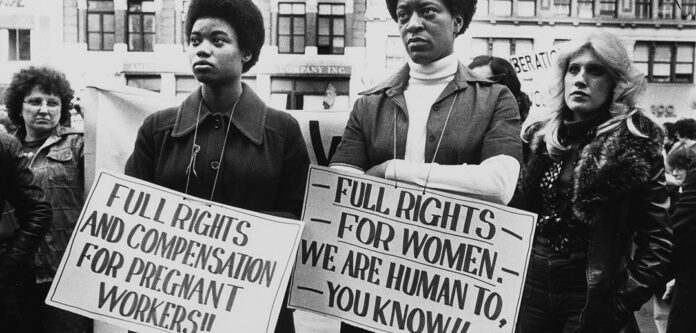Second wave feminism, which emerged in the United States during the 1960s and thrived throughout the 1970s, constituted a pivotal shift in the feminist movement, addressing a larger sphere of issues compared to its predecessor. Unlike the first wave, which primarily focused on suffrage and legal inequalities, the second wave expanded its horizons to include socio-cultural dimensions such as sexuality, family, workplace discrimination, and reproductive rights. This broader approach not only invigorated feminist discourse but also incited critical debates regarding intersectionality and the inclusivity of feminist activism.
Despite its myriad achievements, the second wave of feminism has engendered contentious discussions surrounding its priorities and the representation of diverse voices. Understanding these complexities is integral to appreciating its legacy and its ongoing influence within contemporary feminist movements.
Contextualizing the Emergence of Second Wave Feminism
The genesis of second wave feminism is intimately tied to the socio-political milieu of post-World War II America. The 1950s, characterized by conservatism and a prevalent idealization of domesticity, stifled women’s aspirations and relegated them to the private sphere. During this time, women were encouraged to embody the archetype of the perfect housewife, perpetuating a cycle of disenfranchisement.
The advent of the civil rights movement, alongside other social justice initiatives, paved the way for women to reevaluate their roles in society. Key texts such as Betty Friedan’s “The Feminine Mystique,” published in 1963, catalyzed this awakening. Friedan poignantly articulated the discontent that many women felt, coining the term “the problem that has no name” to describe the pervasive unhappiness engulfing suburban housewives. Her analysis resonated widely, prompting women from various backgrounds to unite and advocate for systemic change.
Consequently, second wave feminism coalesced around a variety of issues, reflecting the urgent need to challenge entrenched patriarchal structures. Feminists began to interrogate not only blatant inequalities but also the subtle systemic forces that perpetuated gender discrimination across multiple domains.
Expanding the Feminist Agenda
The second wave of feminism is notably marked by its efforts to address an expansive array of concerns that transcend the immediate struggle for equal rights. One of the cornerstone issues was reproductive rights, encapsulated in the fight for access to contraception and safe abortion. The landmark Supreme Court case Roe v. Wade (1973) epitomized this struggle, establishing a woman’s right to make decisions regarding her own body. This legal triumph was monumental, yet the fierce debates surrounding it underscored the ongoing ideological divides within American society regarding women’s autonomy.
Education and employment emerged as additional focal points for second wave feminists. The push for equal pay and equal opportunities in the workforce challenged the prevailing notion that women were best suited for domestic roles. Initiatives aimed at dismantling these barriers led to pivotal changes in legislation, including the Equal Pay Act of 1963 and Title IX of the Education Amendments of 1972, which prohibited sex-based discrimination in federally funded education programs.
Moreover, the second wave ushered in a new cultural consciousness surrounding women’s sexuality. Feminists sought to reclaim narratives around sexuality, advocating for sexual liberation, which deviated from previous moralistic constraints. A celebration of female desire and autonomy became a rallying point, exemplified by movements such as the sexual revolution, which encouraged women to assert control over their own sexualities.
Intersectionality: A Crucial Critique
While the second wave of feminism made significant strides, it was not without its critiques. A particularly salient critique revolved around the movement’s claims to represent ‘all women.’ The voices of women of color, working-class women, and those from varying cultural backgrounds were often marginalized in mainstream second wave discourses. This oversight illuminated the necessity for a more intersectional approach that recognizes the interplay of multiple identities and systemic oppressions.
Scholars such as Kimberlé Crenshaw have highlighted how race, class, and gender intersect to create unique experiences of oppression. The lack of inclusivity within second wave feminism has spurred subsequent feminisms, such as Black feminism and Chicana feminism, which explicitly address the specific needs and struggles of women who are often rendered invisible in dominant feminist narratives.
Moreover, the focus on particular issues like reproductive rights and workplace equality sometimes overshadowed the challenges faced by women in the margins. Recognizing and addressing this limitation has been crucial for contemporary feminist movements, which strive to dismantle the barriers of privilege and work toward a truly inclusive feminist agenda.
The Legacy and Ongoing Impact of Second Wave Feminism
The influence of second wave feminism persists in contemporary discussions surrounding gender equality and women’s rights. Its advocacy for reproductive rights, workplace equity, and expanded definitions of femininity have laid the foundation for further advancements in women’s rights. However, the movement’s shortcomings serve as a reminder of the continual evolution and necessity for critical reflection within feminist activism.
Today, feminist discourse actively engages with intersectionality, recognizing that feminism must be a highly inclusive movement that addresses diverse identities and experiences. Solidarity among women—regardless of race, class, sexuality, or ability—remains an essential component of contemporary feminist strategies.
In essence, second wave feminism has bequeathed a complex legacy that informs present-day feminist advocacy. By confronting entrenched norms and advocating for substantive societal changes, it has profoundly shaped the political landscape. Yet, as new generations of feminists rise, the challenges posed by the second wave’s historical limitations underscore the importance of vigilance and adaptability in the continuing quest for gender equality.
In conclusion, while second wave feminism heralded a crucial transformation in the struggle for women’s rights, it also invites an ongoing critique of inclusivity and representation within the feminist narrative. Understanding its multifaceted nature encourages a deeper engagement with contemporary issues, enabling future generations to forge a more equitable and just society.





























